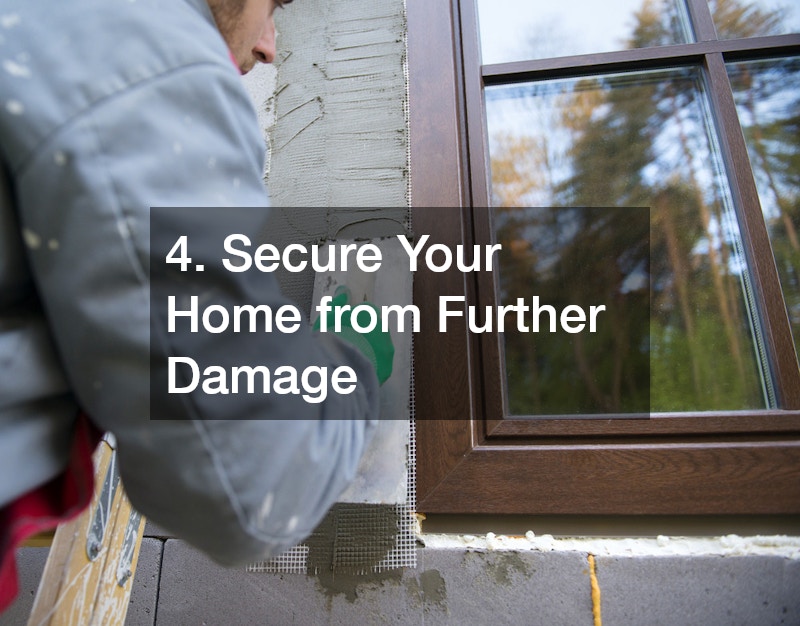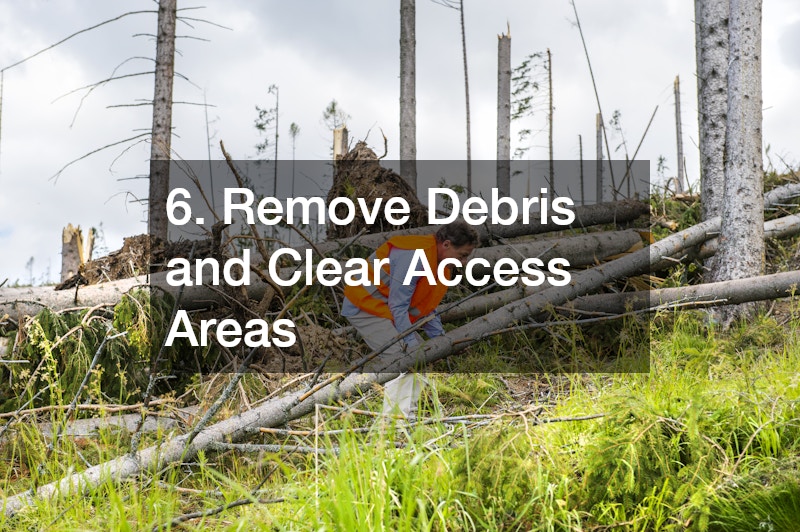
Storm Damage Recovery: 10 Steps Every Homeowner Should Immediately Take
When a storm hits, the aftermath can feel overwhelming. Fallen branches, damaged roofs, flooded basements, and scattered debris can make it hard to know where to begin. On top of that, there’s the stress of keeping your family safe, protecting your belongings, and figuring out what needs urgent attention.
The good news? You don’t have to tackle everything at once. Taking a step-by-step, organized approach makes the recovery process smoother, safer, and far less stressful. By prioritizing safety, documenting damage, and addressing the most urgent repairs first, you can get your home back in order efficiently.
This guide walks you through what homeowners should do first after a storm, from assessing damage and ensuring safety to planning repairs and preventing future problems. Think of it as your roadmap for navigating the chaos and regaining control of your home.
1. Assess the Extent of Damage
Before doing anything else, take a step back and evaluate the damage to your home. This initial assessment helps you figure out what needs urgent attention and what can wait.
Survey the Property
-
Walk around your home only if it’s safe.
-
Look for obvious damage like fallen branches, broken windows, or roof issues.
-
Take note of water intrusion, structural cracks, or other hazards.
Document What You See
-
Take clear photos or videos from multiple angles.
-
Capture both major and minor damage—this will help with insurance claims.
-
Make a written list of damaged areas, furniture, appliances, or outdoor structures.
Focus on Safety First
-
Avoid touching anything that could be dangerous, like hanging limbs or exposed wiring.
-
Prioritize structural issues and risks to you or your family over cosmetic damage.
By carefully assessing the damage, prioritizing safety, and documenting everything thoroughly, you set yourself up for a much smoother recovery. These first steps may seem simple, but they provide the foundation you need to make smart decisions, work with professionals effectively, and begin restoring your home with confidence.
2. Ensure Your Safety and Your Family’s Safety

Safety should always come first after a storm. Protect yourself, your family, and anyone helping you before attempting cleanup or repairs.
Check for Immediate Hazards
-
Stay away from fallen trees, power lines, or unstable structures.
-
If you smell gas or notice damaged electrical wiring, evacuate immediately.
Prepare an Emergency Kit
-
Keep essentials on hand: water, snacks, flashlights, batteries, first aid supplies, and medications.
-
Even a short power outage or small hazard can become serious without basic supplies.
Avoid Unnecessary Risks
-
Don’t attempt to fix dangerous problems yourself.
-
Wait for trained professionals if there’s any question about safety.
Putting safety first protects everyone from unnecessary risks. If you steer clear of hazards, keep an emergency kit on hand, and know when to call in professionals, you can focus on recovery without putting yourself or your family in danger.
3. Document Damage for Insurance Purposes
Once everyone is safe, the next step is creating a detailed record of all damage. This will make insurance claims smoother and help you organize repairs.
Take Photos and Videos
-
Capture your home, yard, and personal belongings from multiple angles.
-
Focus on both major damage and smaller issues that may matter for claims.
Make a Written Inventory
-
List affected items like furniture, appliances, and outdoor structures.
-
Keep receipts for emergency repairs, temporary accommodations, or supplies.
Create a Recovery Roadmap
-
Use your documentation to prioritize repairs.
-
Having a clear record helps you track progress and ensures you don’t overlook anything.
Thorough documentation makes insurance claims smoother and repairs easier to organize. With photos, videos, and detailed lists in hand, you’ll have a roadmap that guides the recovery process and ensures nothing gets overlooked.
4. Secure Your Home from Further Damage

Even after the storm passes, your home isn’t completely out of danger. Taking quick temporary steps can prevent small issues from turning into major headaches. Think of this stage as damage control while you plan your long-term repairs.
Protect Windows and Roofs
-
Cover broken windows with plastic sheeting or plywood to keep out rain and wind.
-
Use tarps to cover holes in the roof or damaged areas of siding.
-
Move valuable items away from windows or walls that are exposed to potential leaks.
Move and Protect Belongings
-
Bring outdoor furniture, planters, and other loose items inside if possible.
-
Elevate items off the ground in basements, garages, or patios to avoid water damage.
-
Check for items that could become flying debris during leftover wind gusts.
Clear Hazards and Secure Property
-
Make sure doors, gates, and fences are properly secured.
-
Remove broken branches, unstable structures, or debris that could cause further damage.
-
If large or dangerous trees are down or precariously leaning, arrange for emergency tree removal to prevent them from falling on your home or vehicles.
Taking these steps doesn’t fix the storm damage permanently, but it helps protect your home and belongings until professional repairs can be made. A little effort now can save a lot of stress and expense later.
5. Address Water Intrusion and Flooding
Water is one of the most damaging forces after a storm. Even a small leak or puddle can quickly escalate into major problems like mold, structural issues, or ruined belongings. Acting fast is essential to protect your home and keep recovery costs manageable.
Remove Standing Water
-
Use pumps, buckets, or wet vacs to get rid of any water as quickly as possible.
-
If flooding is extensive, consider calling professional flood services to safely and efficiently extract water.
-
Don’t forget to check crawlspaces, basements, and low-lying areas around your home.
Protect Valuables
-
Move furniture, electronics, and personal belongings to a dry area.
-
Elevate items off the floor where possible to prevent further damage.
-
Consider temporarily storing especially sensitive items elsewhere until your home is fully dried.
Dry Out Your Home
-
Use fans, dehumidifiers, and open windows (if the weather allows) to reduce moisture.
-
Pay attention to carpets, walls, floors, and hidden areas that may retain water.
-
Check and clean gutters and drains; clogged water paths can worsen flooding, so schedule clogged drain cleaning if needed.
Act Quickly
-
Speed is crucial: the longer water sits, the more damage it can cause.
-
Even small leaks should be addressed immediately to prevent mold growth and structural problems.
-
Regular monitoring for hidden damp areas can save costly repairs in the long run.
6. Remove Debris and Clear Access Areas

After handling immediate hazards and water issues, the next step is to clear debris from your property. Fallen branches, damaged fences, and scattered belongings can make navigating your home dangerous and can slow down repair efforts. Clearing these obstacles ensures that you and any professionals can safely access damaged areas.
Work Safely While Removing Debris
-
Wear gloves, sturdy boots, and protective clothing to prevent injuries.
-
Avoid lifting heavy objects alone; get help or wait for professionals if needed.
-
Sort debris into piles for disposal, recycling, or temporary storage.
Consider Professional Assistance
-
For large or heavy debris, or for items in difficult-to-reach areas, hiring crane services can make removal safer and faster.
-
A professional storm clean up service can handle large-scale cleanup efficiently, saving time and reducing risk.
Take It Step by Step
-
Don’t try to clear everything at once—tackle one area at a time to avoid fatigue and accidents.
-
Create a plan for removing debris systematically, starting with the most hazardous items first.
-
Keeping the property organized during cleanup helps prevent accidents and makes the repair process smoother.
7. Check Structural Elements and the Roof
After a storm, inspecting your home for structural damage is one of the most critical steps. Even if your home looks fine from the outside, hidden issues like weakened supports, cracked walls, or damaged siding can pose serious safety risks. Carefully evaluating both your roof and other structural elements ensures that you address the most dangerous problems first.
Inspect the Roof
-
Look for missing or broken shingles, holes, or leaks.
-
Check flashing around chimneys, vents, and skylights for damage that could allow water in.
-
Examine gutters and downspouts for clogs or debris that might affect drainage.
-
Schedule roof damage repairs promptly if you notice significant issues to prevent further deterioration.
Examine Structural Elements
-
Inspect walls, windows, and doors for cracks, warping, or misalignment.
-
Check the foundation and support beams for signs of water damage, shifting, or weakening.
-
Look at ceilings and attic spaces for sagging or moisture marks, which could indicate hidden problems.
-
If you’re unsure about the severity of any damage, contact a local roofer or professional inspector to safely assess your home.
Prioritize Safety
-
Avoid attempting major repairs yourself if the damage is severe.
-
Focus on areas that pose immediate hazards, like unstable roofs or compromised supports.
-
Cosmetic issues can wait, but ensuring the integrity of your home’s framework is essential to prevent further problems.
8. Inspect Electrical and Utility Systems

Storms can wreak havoc on a home’s electrical and utility systems, and even minor damage can pose serious safety risks. Before turning the power back on, it’s essential to inspect your systems carefully.
Check Electrical Systems
-
Look for exposed or frayed wiring, tripped breakers, and burned outlets.
-
Avoid touching any damaged components, and do not attempt repairs if you’re unsure.
-
If you notice any serious issues, call an emergency electrician immediately to ensure your home is safe.
-
Make a note of any outlets, switches, or panels that need repair for later follow-up.
Inspect Other Utilities
-
Water lines: Check for leaks, cracks, or broken pipes that could cause flooding or water damage.
-
Gas lines: Smell for gas or inspect connections for damage. If you detect a leak, evacuate immediately and call the appropriate emergency service.
-
HVAC systems: Ensure that your heating, cooling, and ventilation systems weren’t damaged by wind or water intrusion.
Prioritize Safety
-
Even if you feel confident handling minor repairs, avoid taking risks with electricity or gas.
-
Keep children and pets away from damaged areas until the systems are fully inspected.
-
Document any damage for insurance purposes before making repairs.
9. Plan Repairs and Contact Professionals
Once you’ve assessed the damage and made sure everyone is safe, the next step is to plan out your repairs. Organizing the work ahead of time helps prevent mistakes, keeps costs manageable, and ensures that urgent issues get handled first.
Prioritize Repairs
-
Focus on critical areas like structural damage, water intrusion, and electrical hazards.
-
Identify minor repairs that can wait versus issues that require immediate attention.
-
Make a checklist of repairs in order of priority to keep your recovery on track.
Hire the Right Professionals
-
Get multiple estimates from contractors and check references before committing.
-
Make sure any professional you hire is licensed and experienced in storm recovery.
-
Consider arranging dumpster rental services to handle debris removal efficiently while repairs are underway.
Plan and Schedule Work
-
Balance speed with careful planning—rushing can lead to mistakes, while waiting too long can let small problems become major ones.
-
Schedule contractors in a logical order, starting with urgent structural and safety repairs.
-
Keep clear communication with your team to avoid overlapping work or delays.
10. Take Preventative Measures for Future Storms
When your home is back on track, it’s smart to start thinking about how to protect it from the next storm. A few proactive steps can save you time, money, and stress in the future.
Strengthen Your Home
-
Reinforce your roof, windows, and doors to better withstand high winds.
-
Inspect siding and other exterior elements for weak spots that could be damaged in the next storm.
Maintain Trees and Landscaping
-
Trim trees and remove weak or damaged branches before they become hazards.
-
Hire professional tree services if large or hard-to-reach branches need attention.
-
Keep your yard clear of loose debris that could become dangerous projectiles.
Manage Water and Drainage
-
Clean gutters, downspouts, and drains regularly to prevent clogs and water buildup.
-
Consider improving drainage systems around your home to reduce the risk of flooding.
Prepare for Power Outages
-
Install backup power systems, such as generators, to stay safe during outages.
-
Keep emergency supplies handy, including flashlights, batteries, and essential tools.
Taking these preventative steps doesn’t just reduce potential damage—it also provides peace of mind. Storms can be unpredictable, but being prepared ensures you and your home are ready for whatever comes next.
Closing Thoughts
Recovering from a storm can feel overwhelming, but following a clear, step-by-step approach makes the process much more manageable. Start with safety, assess the damage, document everything for insurance, secure your home, address water issues, remove debris, inspect structures and utilities, plan repairs, and finally, take steps to prevent future damage.
Remember, you don’t have to do everything at once. Tackling recovery in a logical order reduces stress, keeps your family safe, and helps your home bounce back faster. With patience and careful planning, you can restore your property and be ready for whatever comes next.
